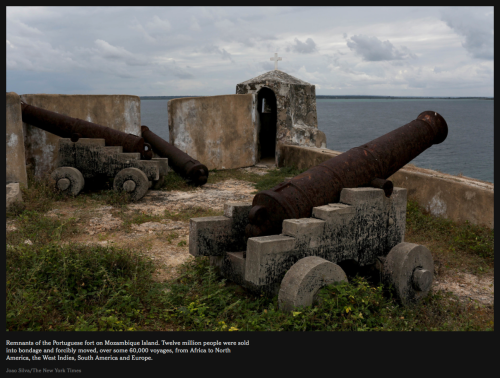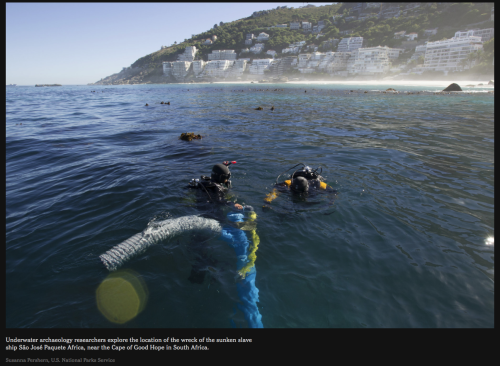Tortuous History Traced in Sunken Slave Ship Found Off South Africa
Share
Explore Our Galleries
Breaking News!
Today's news and culture by Black and other reporters in the Black and mainstream media.
Ways to Support ABHM?
By
On Dec. 3, 1794, a Portuguese slave ship left Mozambique, on the east coast of Africa, for what was to be a 7,000-mile voyage to Maranhão, Brazil, and the sugar plantations that awaited its cargo of black men and women.

Remnants of a Portuguese slave port in Mozambique.
Shackled in the ship’s hold were between 400 and 500 slaves, pressed flesh to flesh with their backs on the floor. With the exception of daily breaks to exercise, the slaves were to spend the bulk of the estimated four-month journey from the Indian Ocean across the vast South Atlantic in the dark of the hold.
In the end, their journey lasted only 24 days. Buffeted by strong winds, the ship, the São José Paquete Africa, rounded the treacherous Cape of Good Hope and came apart violently on two reefs not far from Cape Town and only 100 yards from shore, but in deep, turbulent water. The Portuguese captain, crew and half of the slaves survived. An estimated 212 slaves did not, and perished in the sea.

Underwater archeologists explore the site where the slaver went down off the coast of Cape Town, South Africa.
On Tuesday, the Smithsonian’s National Museum of African-American History and Culture, along with the Iziko Museums of South Africa, the Slave Wrecks Project, and other partners, will announce in Cape Town that the remnants of the São José have been found, right where the ship went down, in full view of Lion’s Head Mountain. It is the first time, researchers involved in the project say, that the wreckage of a slaving ship that went down with slaves aboard has been recovered.
Read the full article.
Read more Breaking News.
Read more about the slave trade.











Comments Are Welcome
Note: We moderate submissions in order to create a space for meaningful dialogue, a space where museum visitors – adults and youth –– can exchange informed, thoughtful, and relevant comments that add value to our exhibits.
Racial slurs, personal attacks, obscenity, profanity, and SHOUTING do not meet the above standard. Such comments are posted in the exhibit Hateful Speech. Commercial promotions, impersonations, and incoherent comments likewise fail to meet our goals, so will not be posted. Submissions longer than 120 words will be shortened.
See our full Comments Policy here.